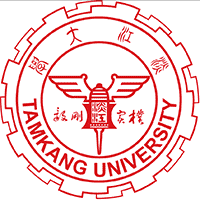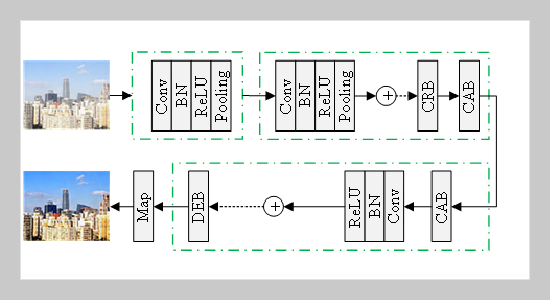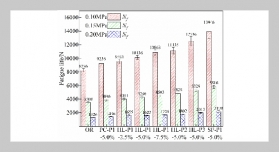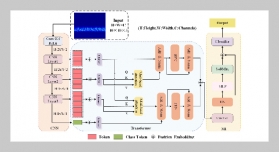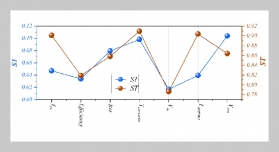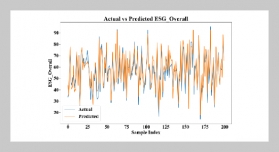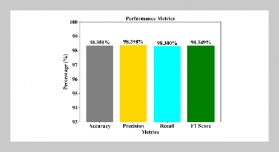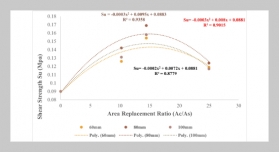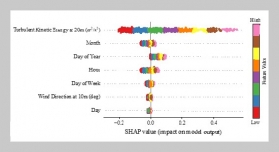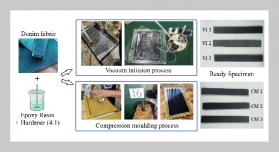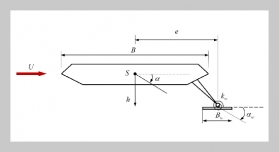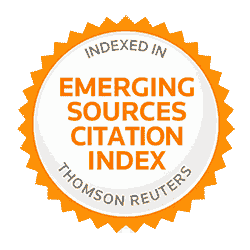- [1] G. Dimas, D. E. Diamantis, P. Kalozoumis, and D. K. Iakovidis, (2020) “Uncertainty-aware visual perception system for outdoor navigation of the visually challenged" Sensors 20(8): 2385. DOI: 10.3390/s20082385.
- [2] E. Zambrano-Serrano, S. Bekiros, M. A. Platas-Garza, C. Posadas-Castillo, P. Agarwal, H. Jahanshahi, and A. A. Aly, (2021) “On chaos and projective synchroniza tion of a fractional difference map with no equilibria using a fuzzy-based state feedback control" Physica A: Statistical Mechanics and its Applications 578: 126100. DOI: 10.1016/j.physa.2021.126100.
- [3] M.Bataineh, M. Alaroud, S. Al-Omari, and P. Agar wal, (2021) “Series representations for uncertain fractional IVPs in the fuzzy conformable fractional sense" Entropy 23(12): 1646. DOI: 10.3390/e23121646.
- [4] L. Teng, Y. Qiao, and S. Yin, (2024) “Underwater im age denoising based on curved wave filtering and two dimensional variational mode decomposition" Computer Science and Information Systems 21(4): 1765–1781. DOI: 10.2298/CSIS240314057T.
- [5] T.Rasham,M.S.Shabbir,P.Agarwal,andS.Momani, (2022) “On a pair of fuzzy dominated mappings on closed ball in the multiplicative metric space with applications" Fuzzy sets and systems 437: 81–96. DOI: 10.1016/j.fss.2021.09.002.
- [6] M. Ju, D. Zhang, and X. Wang, (2017) “Single image dehazing via an improved atmospheric scattering model" The Visual Computer 33(12): 1613–1625. DOI: 10.1007/s00371-016-1305-1.
- [7] B. Cai, X. Xu, K. Jia, C. Qing, and D. Tao, (2016) “Dehazenet: An end-to-end system for single image haze removal" IEEE transactions on image processing 25(11): 5187–5198. DOI: 10.1109/TIP.2016.2598681.
- [8] H.ZhangandV.M.Patel. “Densely connected pyramid dehazing network”. In: Proceedings of the IEEE conference on computer vision and pattern recognition. 2018, 3194–3203. DOI: 10.1109/CVPR.2018.00337.
- [9] S. Yin, L. Wang, and L. Teng, (2024) “Threshold seg mentation based on information fusion for object shadow detection in remote sensing images" Computer Science and Information Systems 21(4): 1221–1241. DOI: 10.2298/CSIS231230023Y.
- [10] L. Yin, L. Wang, W. Huang, S. Liu, B. Yang, and W. Zheng, (2021) “Spatiotemporal analysis of haze in Beijing based on the multi-convolution model" Atmosphere 12(11): 1408. DOI: 10.3390/atmos12111408.
- [11] Y. Gao, Q. Li, and J. Li, (2020) “Single image dehazing via a dual-fusion method" Image and Vision Computing 94: 103868. DOI: 10.1016/j.imavis.2019.103868.
- [12] I. Yoon, S. Jeong, J. Jeong, D. Seo, and J. Paik, (2015) “Wavelength-adaptive dehazing using histogram merging based classification for UAV images" Sensors 15(3): 6633–6651. DOI: 10.3390/s150306633.
- [13] S. An, X. Huang, L. Cao, and L. Wang, (2024) “A com prehensive survey on image dehazing for different atmospheric scattering models" Multimedia Tools and Ap plications 83(14): 40963–40993. DOI: 10.1007/s11042 023-17292-8.
- [14] Y. Wang, F. Fu, F. Lai, W. Xu, J. Shi, and J. Wang, (2019) “Haze removal algorithm based on single-images with chromatic properties" Signal Processing: Image Communication 72: 80–91. DOI: 10.1016/j.image.2018.12.010.
- [15] H. Fu, W. Liu, H. Chen, and Z. Wang, (2020) “An anisotropic Gaussian filtering model for image de-hazing" Ieee Access 8: 175140–175149. DOI: 10.1109/ACCESS.2020.3026185.
- [16] M. Shams, N. Kausar, P. Agarwal, andS.Jain. “Fuzzy fractional Caputo-type numerical scheme for solving fuzzy nonlinear equations”. In: Fractional Differential Equations. Elsevier, 2024, 167–175. DOI: 10.1016/B978-0-44-315423-2.00016-3.
- [17] L. Shafi, S. Jain, P. Agarwal, P. Iqbal, and A. R. Sheer gojri, (2024) “An improved fuzzy time series forecasting model based on hesitant fuzzy sets" Journal of fuzzy extension and applications 5(2): 173–189. DOI: 10.22105/jfea.2024.432442.1357.
- [18] S. Yin, H. Li, A. A. Laghari, T. R. Gadekallu, G. A. Sampedro, and A. Almadhor, (2024) “An anomaly detection model based on deep auto-encoder and capsule graph convolution via sparrow search algorithm in 6G In ternet of Everything" IEEE Internet of Things Journal 11(18): 29402–29411. DOI: 10.1109/JIOT.2024.3353337.
- [19] A. R. Abbasi, (2020) “Probabilistic load flow based on holomorphic embedding, kernel density estimator and saddle point approximation including correlated uncertainty variables" Electric Power Systems Research 183: 106178. DOI: 10.1016/j.epsr.2019.106178.
- [20] A.R.AbbasiandA.R.Seifi,(2013) “Anewcoordinated approach to state estimation in integrated power systems" International Journal of Electrical Power & Energy Systems 45(1): 152–158. DOI: 10.1016/j.ijepes.2012.08.058.
- [21] D. Adla, G. Reddy, P. Nayak, and G. Karuna, (2023) “A full-resolution convolutional network with a dynamic graph cut algorithm for skin cancer classification and detection" Healthcare Analytics 3: DOI: 10.1016/j.health.2023.100154.
- [22] B. S. Krishna, A. S. Anandhi, G. Sharmila, D. Ramya, L. Balaji, and B. Pasupulati. “A Method for Im age De-Hazing for Vision Based Applications”. In: 2024 International Conference on Computational Intelligence for Green and Sustainable Technologies (ICCIGST). IEEE. 2024, 1–6. DOI: 10.1109/ICCIGST60741.2024.10717509.
- [23] J. S. Bhadoria and D. Agarwal. “Enhanced Image De-Hazing Using Novel Hybrid Filtering and Perceptual Fog Density Improvement”. In: 2023 International Conference on Computing, Communication, and Intelligent Systems (ICCCIS). IEEE. 2023, 562–567. DOI: 10.1109/ICCCIS60361.2023.10425763.
- [24] J. A. H. Shaikh, S. M. Mukane, and S. N. Randive, (2025) “Lightweight progressive recurrent network for video de-hazing in adverse weather conditions" The Visual Computer 41(7): 4661–4672. DOI: 10.1007/s00371-024-03683-x.
- [25] E. Radha, D. Suresha, and E. Ramesh. “Design and Implementation of Image De-hazing Using Histogram Equalization”. In: Mobile Radio Communications and 5G Networks: Proceedings of Third MRCN 2022. Springer, 2023, 343–351. DOI: 10.1007/978-981-19-7982-8_28.
- [26] M. T. Ahmed, S. H. Bappy, J. K. Tuly, and T. Bil lah, (2023) “An Effective Single Image Dehazing Method to Enhance Image Visibility" Journal of Information Technology 12(1): 1–12. DOI: 10.6035/14028.2017.178642.
- [27] A.-R. Abbasi, R. Khoramini, B. Dehghan, M. Abbasi, and E. Karimi, (2015) “A new intelligent method for optimal allocation of D-STATCOM with uncertainty" Journal of Intelligent & Fuzzy Systems 29(5): 1881 1888. DOI: 10.3233/ifs-151666.
- [28] A. Kavousi-Fard, R. Khorram-Nia, M. Rostami, and A. Abbasi, (2015) “An smart stochastic approach to model plug-in hybrid electric vehicles charging effect in the optimal operation of micro-grids" Journal of Intelligent &Fuzzy Systems 28(2): 835–842. DOI: 10.3233/ifs-141365.
